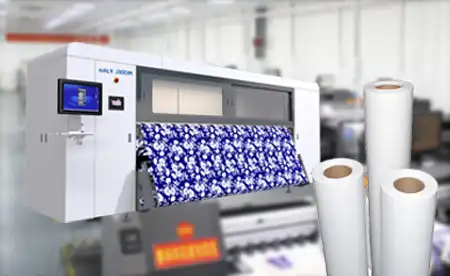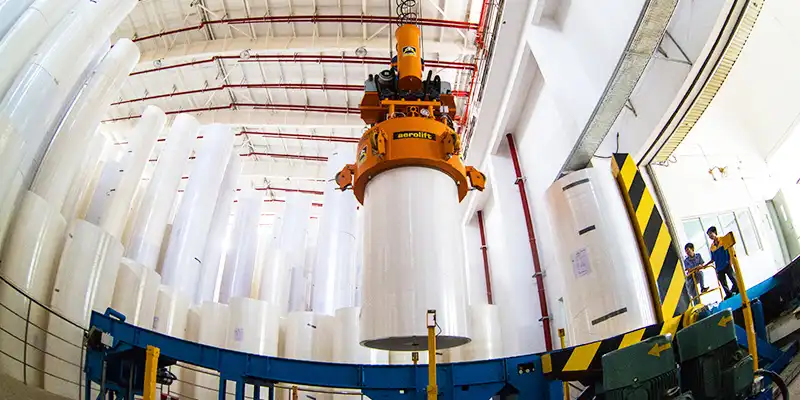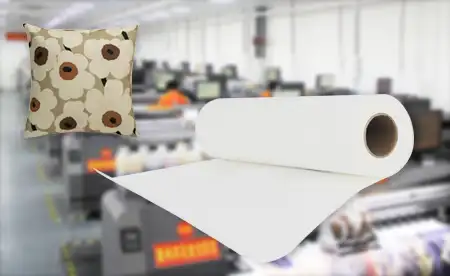HOT SALE
APPLICATION
Phone:+86-15215969856 E-Mail: 396838165@qq.com
Sublimation printing is now among the top ways to place bright and lasting designs on all sorts of items. Whether it’s clothing, home decorations, marketing products, or custom gifts, getting a sharp and clear image relies a lot on using the right stuff—especially sublimation paper. Knowing how this paper works with different materials is super important for getting great results. This guide dives into the basics of sublimation, how it’s not the same as heat transfer methods, and which materials pair best with it.

Fundamentals of Sublimation and Heat Transfer Processes
To really get how sublimation paper works on various items, you need to know the simple ideas behind sublimation and heat transfer tricks.
What is Sublimation Printing?
Sublimation paper is a unique kind of paper made for printing on things like shirts, cups, and other sublimation items. It has a special polyester layer on the printing side. This layer traps the dye ink inside the paper. Then, when heat is added, the ink moves onto the item. The process is pretty straightforward. When heated, the sublimation ink turns into a gas. The polyester fabric soaks up this gas. After cooling down, the gas turns solid again. This means the design stays on the item for good.
Differences Between Sublimation Paper and Heat Transfer Paper
Both methods use heat to move designs, but they’re quite different in how they work. Sublimation printing uses a dye ink that becomes a gas and blends right into the item. On the other hand, heat transfer paper uses wax and color stuff that sticks on top of the surface. So, sublimation becomes part of the material itself. Heat transfer just sits on top.
How the Sublimation Process Works on Blanks
Sublimation only does a good job on polyester fabrics or surfaces with a polymer coating. You can print straight onto polyester cloth or any item with a polyester coating. When you use a heat press machine, the dye turns into a gas. It then mixes with the material at a tiny, molecular level.
Key Factors That Influence Print Quality on Blanks
A few things can change how nicely your design moves from paper to item. Getting these things right helps with clear images, bright colors, and long-lasting results.
The Role of Sublimation Paper in Image Transfer
The end result of your work depends a lot on the sublimation paper you pick. Our key products are 40gsm, 50gsm, 60gsm, 70gsm, 90gsm, and 100gsm sublimation papers. Their widths go from 61cm up to 320cm. We have top-notch jumbo roll sublimation papers. They give awesome heat transfer results, hold a lot of ink, dry quickly, and run smoothly during use.
Importance of Temperature, Pressure, and Time Settings
If you set the press wrong, you might get fuzzy images or designs that don’t stick well. The best settings change based on the material. Usually, you need heat between 180–200°C (356–392°F). Use medium pressure. And set the time for 30 to 60 seconds.
Compatibility Between Inks, Papers, and Blank Surfaces
Not every ink or paper matches with every item. For textiles after transfer, you get Sunproof Level 6 and Washproof Level 4-5. If you mix the wrong parts, the colors might fade or the transfer might not finish properly.
Choosing the Right Sublimation Paper for Different Applications
Picking the best paper for your project makes the results steady and top-quality.
Coated vs. Uncoated Sublimation Papers
Coated papers come with a special layer. This holds more ink and gives bright colors. Uncoated papers might cost less. But they often lose sharpness and color depth.
High Release vs. Low Release Sublimation Papers
High-release papers work great for bold designs. They let out more ink when pressed. Low-release papers suit lighter projects. Too much ink in those cases might cause smudging.
Selecting Paper Based on Substrate Type (Fabric, Ceramic, Metal, etc.)
Different materials take in dyes in their own way:
-
For fabrics like sportswear, go with thin papers like 29GSM or 33GSM.
-
For hard items like mugs or aluminum plates, thicker ones like 90GSM or 100GSM help control the press better.
Common Issues When Using Sublimation Paper on Blanks
Even pros run into problems sometimes. These can mess up results if you don’t fix them right.
Ghosting and Blurred Images
Ghosting happens if the paper or item shifts while pressing. To stop this, try these tips:
-
Use tape that can handle heat.
-
Press down firmly.
-
Don’t open the press too fast after you’re done.
Color Fading or Inaccurate Color Reproduction
If your printer settings are off or inks don’t match, prints can look dull. Always use ICC profiles made for your specific printer and paper combo.
Ink Bleeding or Uneven Transfers
This often comes from too much ink or using cheap blanks not meant for sublimation.
Best Practices for Achieving Consistent Transfer Results
Sticking to a set way of doing things helps you get the same good results every time on different jobs.
Proper Storage and Handling of Sublimation Paper
Keep it in a cool, dry spot. Avoid wet places. This stops the paper from bending or the ink from starting early.
Preparing the Blank Surface Before Pressing
Make sure the surface is clean. Use a lint roller or alcohol wipes to get rid of dust or oil before you press.
Optimal Printer Settings for Different Types of Transfers
Use the suggested settings, usually around 300–360 dpi. Turn on mirrored image mode. This stops designs from flipping the wrong way after transfer.
Materials That Work Well with Sublimation Techniques
Choosing the right items to print on is key for bright results. They should last through wear and washing too.
Polyester Fabrics and Polymer-Coated Surfaces
You can sublimate straight onto man-made fibers like polyester, lycra, nylon, and sportswear. Some examples are:
-
T-shirts
-
Mugs
-
Phone cases
-
Mouse pads
-
Tote bags
-
Pillow covers
-
Jigsaw puzzles
-
Cosmetic bags
-
Aluminum plates
Changfa Digital has a big range of matching fabrics. One of them is sportswear fabric GZP-001 (100D Intelock). It has a width of 153cm, weighs 155gsm, and is made of 100%T. It’s perfect for printing high-quality clothes.

Avoiding Non-Polyester or Untreated Materials
Natural stuff like cotton doesn’t mix well with dye gases. Unless it’s treated with a polymer layer first, the image will fade or not show up at all.
Comparing Sublimation Paper with Heat Transfer Paper
Knowing what each type is good at helps you pick the right one for your job.
Use Cases for Each Type of Transfer Medium
Go with sublimation for white or light-colored polyester items when you need colors to stay bright for a long time. Heat transfer works better for dark fabrics or cotton stuff. It’s good for full-color prints even if they don’t need to last forever.
Durability and Washability Differences in Final Products
Sublimated designs become one with the material. They don’t fade much, even after lots of washes. Heat transfer designs, though, might peel off over time since they just sit on the surface.
Introducing Changfa Digital as a Trusted Supplier in the Industry
When you’re looking for good materials for your printing work or hobby, teaming up with a skilled maker can make a huge difference.
Changfa Digital is a pro at making sublimation paper. They’ve been in the digital printing game for over 15 years. It’s a factory that handles everything—from raw paper to coating, cutting, and shipping all over the world.
Changfa Digital runs 4 coating lines and has 4 cutting areas. They use 10 cutting machines for 2 and 3 core packing rolls.
Their main products include 29gsm, 35gsm, 40gsm, 50gsm, 60gsm, 70gsm, 90gsm, and 100gsm papers. These fit many uses, like fashion items and home fabrics. They’re known for high ink release and bright color results.
They also sell matching tools like Printers and Sublimation Ink. These are made to work well together. This ensures everything matches up at every step of your printing job.

Summary of Key Takeaways for Reliable Transfers on Blanks
For the best results, keep these in mind:
-
Stick to polyester-based items or things with polymer coatings.
-
Pick coated, high-release papers that match your material.
-
Set the right heat, time, and pressure levels.
-
Get trusted supplies, like those from Changfa Digital.
By learning these basics and using good materials, you’ll keep getting pro-level results. This applies to all your projects, whether you use sublimation paper or heat transfer options.
FAQs:
Q1: What type of blanks are compatible with sublimation paper?
A: Only polyester fabrics or surfaces with a polymer coating work well with sublimation printing. You can print right on polyester cloth or any polyester-coated sublimation blank.
Q2: Can I use sublimation paper in any inkjet printer?
A: No, that won’t work. You need an inkjet printer with special dye-sublimation inks made for this job. Regular printer ink won’t do the trick on sublimation paper.
Q3: How do I prevent ghosting during heat transfer?
A: Hold your design in place with heat-safe tape before pressing. Keep the pressure even. Don’t lift the press too soon after finishing. And let things cool down before moving them. This stops ghosting from misalignment.







